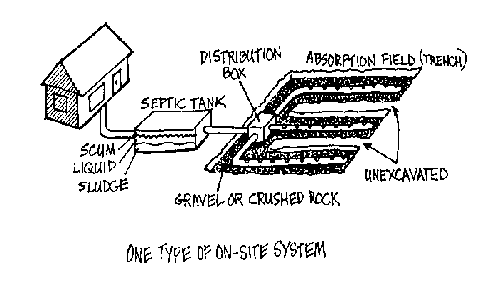State Compliance Rules

Attention customers with Aerobic Treatment Units (ATU):
This is the paperwork filed with your property which mandates a higher level of septic maintenance.
Click here to open the PDF: Health District Agreement ATU
Washington State Septic System Regulations
An on-site septic (sewage) system is the most common method of sewage treatment and disposal for homes that are not on a public sewer line. A septic system consists of a tank and a drainfield where the wastewater slowly seeps into the soil. Proper septic systems treat the sewage before it reaches ground and surface waters. Poorly designed or malfunctioning systems cause odor and water pollution.
Design
 A licensed designer must be consulted about new or upgraded systems. Your county health department must inspect it before you cover it. This is the law.
A licensed designer must be consulted about new or upgraded systems. Your county health department must inspect it before you cover it. This is the law.
Be sure you know how your system works. Many newer homes have “alternative” systems with electric pumps and controls which require annual inspection by a professional. The state Department of Health has information about the different types of systems and their maintenance.
Maintenance
Septic tanks need to be inspected by a knowledgeable person once a year. Frequency of pumping will depend on your household habits.
- Do not flush material that will not easily decompose, such as hair, diapers, cigarette butts, sanitary napkins, tampons, or coffee grounds. They will reduce your system’s capacity and clog the drainfield.
- If you use a garbage disposal, it will contribute to the wasteload of your on-site system and you must allow for more frequent inspection.
- Do not wash or flush strong chemicals into the system. They kill the bacteria needed to decompose the wastes.
- Reduce the volume of wastewater by installing water-saving devices and thinking conservation year-round, not just during drought.

- Balance water use throughout the week to avoid overloading the system at any one time.
- Don’t let the soils over the drainfield get compacted. Do not use that area for large animals, a roadway, parking spot, patio, or as a storage area.
- Do not cover the surface of the drainfield with anything impermeable like plastic or cement. This reduces the soil’s ability to “breathe,” preventing proper function of the drainfield.
- Divert roof drains and runoff away from the drainfield. Saturated soil cannot absorb wastewater from the septic system.

- Do not drain hot tub water to septic systems or surface water; the large amount of chlorinated water would be harmful. Regulations vary, so please check with your local health department for disposal options in your community.
- Keep accurate records, including diagrams of design, location and size of the entire septic system. They should include dates the system was inspected and when the tank was pumped (a record page is included in this guide).
Signs of Septic System Failure
- Ponded water or damp spots, foul odors, and/or dark gray or black soils in your yard
- Water that rises to the surface during heavy rain or when your water use is high, such as when doing laundry
- Toilets that flush slowly or drains that back up
- Patterns of bright lush growth in your lawn, or the growth of plants associated with swampy areas.
If you notice any of the above signs or have any suspicions that your system may have problems, get it checked right away. Septic systems do not generally show signs of failure until they are in an advanced state of deterioration. You can avoid costly repairs by having your tank inspected and pumped regularly.
For information and help: Contact your county environmental health department or the state Department of Health.
Content courtesy of the Washington State Department of Ecology Website









